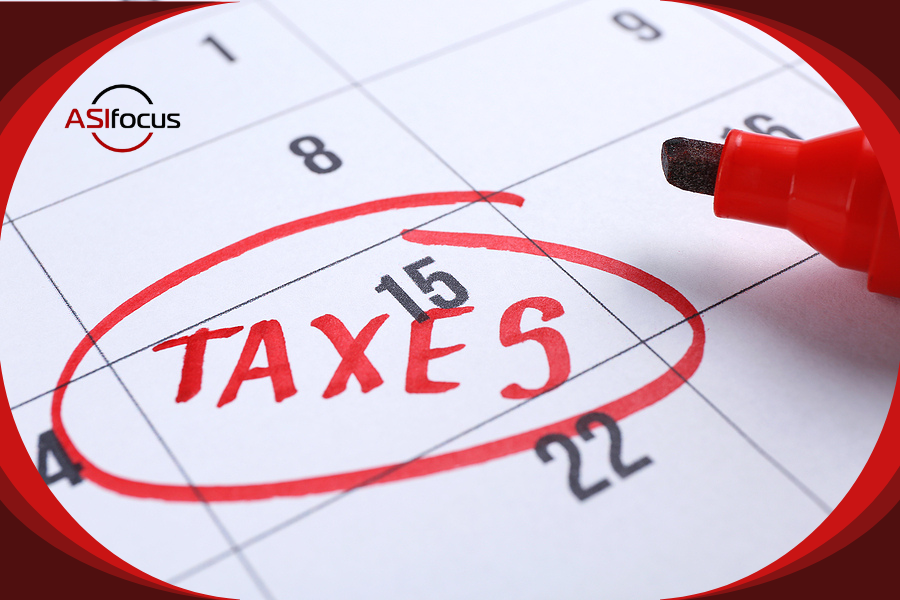Running a business means juggling a lot of responsibilities, and tax deadlines are one of those things you simply can’t afford to miss. With so many due dates hidden in federal tax laws, it can be overwhelming to keep track.
That’s why we’ve put together this guide to highlight the key tax dates you need to know in 2025. We’ll also cover what to do if you can’t pay, how to apply for an extension, and which forms you’ll need based on your business type. Missing a deadline could mean hefty penalties, so let’s make sure you stay ahead of the game.
When Is Tax Day in 2025?
For most individuals, the big day—Tax Day—is April 15, 2025.
However, if you’re a U.S. citizen or permanent resident living abroad, you automatically get an extension to June 16, 2025 (since June 15 falls on a Sunday). If you need more time, you can request an extension until October 15, 2025. But keep in mind that even if you get an extension to file, your tax payment is still due by your original deadline.
Key Tax Deadlines for Businesses in 2025
Below is a breakdown of important tax deadlines for businesses, including corporations, LLCs, and partnerships.
February 18, 2025
The final day to submit statements for payments reported on Form 1099-B, Form 1099-S, and attorney legal fees reported on Form 1099-MISC.
February 28, 2025
- Last day to submit paper informational returns (Forms W-2 and 1099s) to the IRS.
March 17, 2025
- Deadline for multi-member LLCs, partnerships, and S Corps to send out Schedule K-1 to owners.
- Deadline for multi-member LLCs and partnerships to file their 2024 tax returns using Form 1065.
- Deadline for S Corps to file their 2024 tax return via Form 1120-S.
- Last day for S Corps, multi-member LLCs, and partnerships to request a 6-month extension using Form 7004.
March 31, 2025
- Last day to submit electronic Forms W-2 and 1099s to the IRS.
April 15, 2025
- Deadline for C Corps to file their 2024 tax return via Form 1120.
- Last day for C Corps to request an extension using Form 7004 and make estimated tax payments.
- First quarter estimated tax payments for 2025 due.
April 30, 2025
- Deadline for businesses with employees to file Q1 payroll tax returns using Form 941.
June 16, 2025
- Second quarter estimated tax payment due for corporations.
July 31, 2025
- Deadline for Q2 payroll tax returns using Form 941.
September 15, 2025
- Extended deadline for partnerships, multi-member LLCs, and S Corps that filed for extensions.
- Third quarter estimated tax payment due for corporations.
October 15, 2025
- Extended deadline for C Corp tax returns.
October 31, 2025
- Deadline for Q3 payroll tax returns using Form 941.
December 15, 2025
- Fourth quarter estimated tax payment due for corporations.
Filing Considerations and Payment Plans
Does My Return Need to Be Received or Just Postmarked by the Deadline?
The IRS considers your return on time if it is correctly addressed, has sufficient postage, and is postmarked by the due date. If filing electronically, ensure it is submitted and accepted by 11:59 PM in your local time zone.
Do Tax Deadlines Also Include Payments?
Yes! Any taxes owed must be paid by the original due date to avoid penalties and interest. Even if you request an extension, the IRS still expects your payment by April 15.
What If I Can’t Pay My Taxes?
If you can’t pay the full amount, pay as much as you can and apply for a payment plan. The IRS offers:
- Short-term plans (for balances under $100,000) with up to 180 days to pay.
- Long-term plans (for balances under $50,000) with up to 72 months to pay.
Setting up a payment plan reduces penalties by 50%, though interest continues to accrue. If you owe over $25,000, direct debit payments are required.
What If I Miss the Deadline?
Missing the deadline results in penalties and interest on unpaid taxes. If you’re due a refund, there’s typically no penalty for filing late. The late filing penalty is 5% per month of unpaid taxes, up to 25%. Filing over 60 days late incurs a penalty of $485 or 100% of your unpaid tax, whichever is less.
How to Apply for an Extension
You can apply for an extension in two ways:
- Paying online and selecting an option to file for an extension
- Filing Form 4868 electronically or by mail
How and Where to File
C Corporations
- Use Form 1120 to file tax returns.
- Pay taxes electronically through EFTPS (Electronic Federal Tax Payment System).
LLCs
- Tax forms depend on how the LLC is taxed:
- Single-member LLCs (taxed as sole proprietors) use Schedule C (Form 1040).
- Multi-member LLCs (taxed as partnerships) use Form 1065.
- LLCs taxed as S Corps file Form 1120-S.
- LLCs taxed as C Corps file Form 1120.
Sole Proprietors & Single-Member LLCs
- Use Schedule C (Form 1040) to report business income.
Partnerships & Multi-Member LLCs
- File Form 1065 unless taxed as an S Corp or C Corp.
S Corporations
- Use Form 1120-S for tax returns.
Stay Ahead with Smart Tax Planning
Meeting tax deadlines doesn’t have to be stressful. The key is having efficient systems in place so you’re always prepared. Using Sage accounting software can help you streamline tax preparation and stay on top of deadlines.
As always, tax laws can be complex and frequently change, so we recommend consulting a qualified CPA or tax professional for specific guidance. ASI can help. Contact us or schedule your free consultation today to get started with Sage 100.

